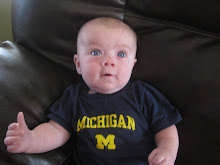The Age features an editorial by scientist and author Elizabeth Finkel which displays how misleading proponents of human cloning for research consistently are. All it takes is some misdirection about what cloning is with some preposterous claims about embryonic stem cell research mixed in.
At present, human cloning is banned outright in Australia. That ban, however, covers two different things. It outlaws not only the cloning of human babies, but also therapeutic cloning, the aim of which is to copy the cells of a human being - an entirely different proposition.
Actually, the law bans or criminalizes many things, including creating human embryos for a purpose other than acheiving a pregnancy. Another prohibited practice happens to be the creation of a human clone. The aim of "therapeutic" cloning is not to copy the cells of a human being. The aim is to create a genetically identical embryonic human being who can be killed for their cells.
What does the technique of therapeutic cloning offer us? For one thing, merely by shedding a skin cell, a person might acquire a perfectly matched reservoir of embryonic stem cells: the biological gold that can regenerate any organ.
Ha!! "The biological gold that regenerate any organ?" Talk about an outlandish claim. Have embryonic stem cells ever completely regenerated a single human organ much less every human organ?
The 100-cell embryo is also a focal point of concern because it could be implanted into a woman's womb to produce a human being.
Before the above paragraph, Finkel finally admits that what is created by "therapeutic" cloning is an embryo even though "senseless ball of cells" is probably her preferred term.
But she never explains how implanting something into a human womb turns it into a human being. How does a mere change in location make a cloned human embryo into a human being?
Let's not oversell things here: it's unlikely patients will be seeing these "cures" for several years. (Of course they will be available sooner if you happen to live in South Korea.)
Notice how Finkel oversells things in the same paragraph where she claims to take a brake from her Mary Kay ways. No one knows if hypothetically distant cures via human cloning will be available sooner in South Korea than anywhere else because no one knows if they will ever occur. Using "of course" is horribly misleading rhetoric. The obvious sell point here is, "You better hurry up Australians and get on the human cloning bus so you can get the cures faster. All the South Koreans will be cured from a plethora of diseases while your bodies are rotting away."
For another, while researchers are having success producing brain, spinal cord and blood grafts, it's not so easy to grow pancreas, liver or kidney tissue.
But wait, I thought you said that embryonic stem cells were "biological gold that can regenerate any organ?" If researchers can regenerate any organ with then why are they having such trouble growing pancreas, liver, and kidney tissue?






No comments:
Post a Comment